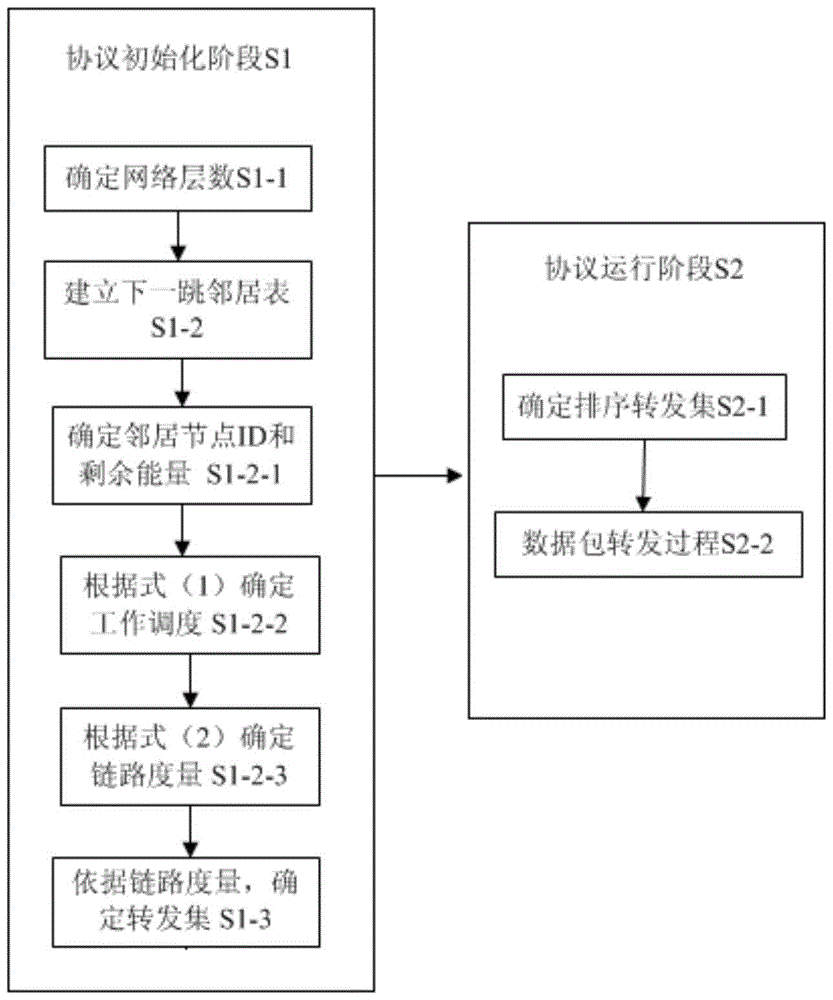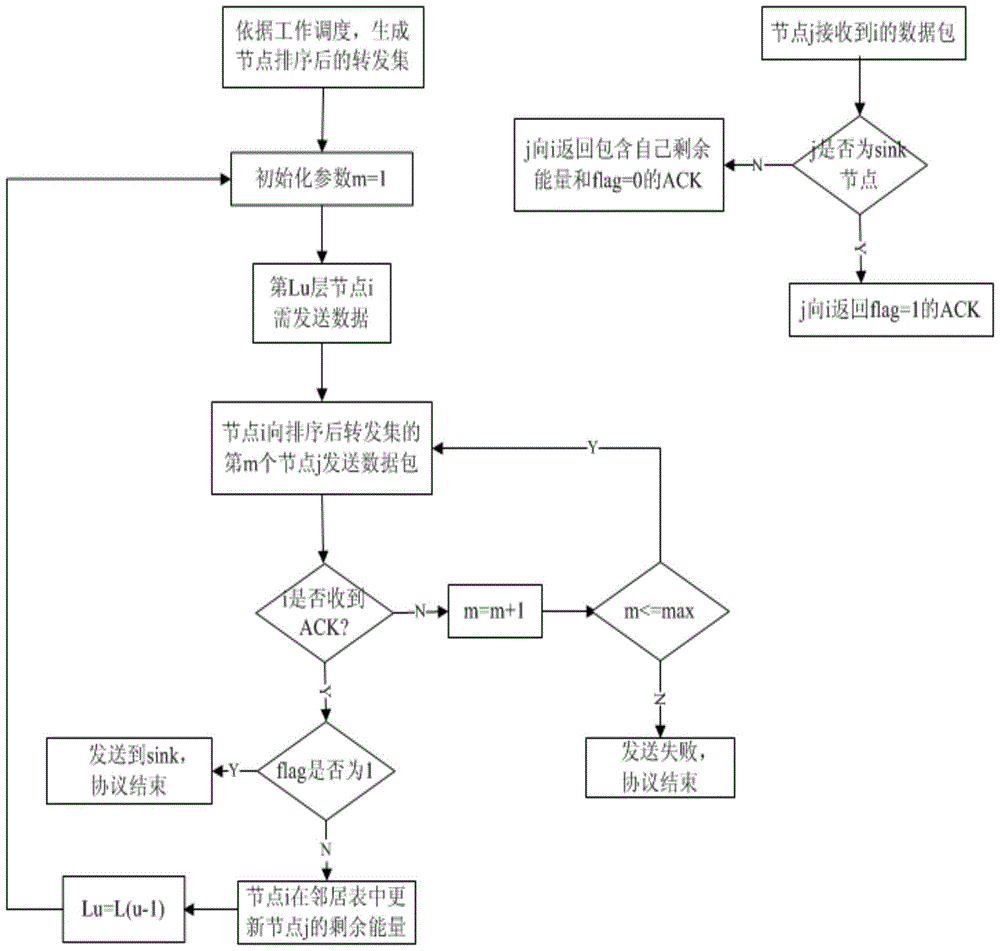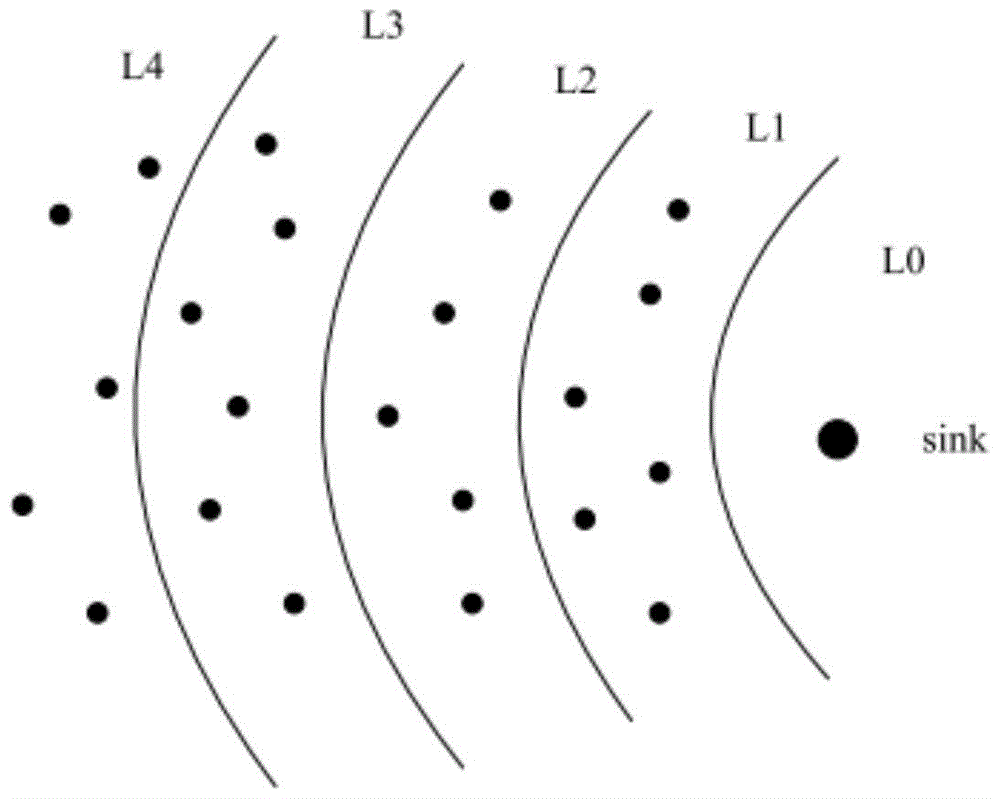A Routing Method for Intermittently Connected Wireless Sensor Networks
A wireless sensor, intermittent technology, applied in the direction of network topology, wireless communication, data exchange network, etc., can solve the problems of inappropriate use, node energy exhaustion, a large amount of communication and computing overhead, etc., to achieve balanced energy consumption and data forwarding rate. and the effect of transmission delay balance
- Summary
- Abstract
- Description
- Claims
- Application Information
AI Technical Summary
Problems solved by technology
Method used
Image
Examples
Embodiment Construction
[0050] The EBRP protocol of the present invention is applied to the following network model: except the sink node, all sensor nodes are isomorphic, and the initial energy E initial Equal, is a unitless constant; the network has local time synchronization; use a communication graph G=(V, E, P, W) to represent a multi-hop wireless sensor network, V represents a node set, and E represents a link set , when node j is within the communication range of node i, a link (i, j) from node i to j is formed; P represents the set of link quality of all links, and the chain of link (i, j) The road quality is denoted as p i,j , the link quality between all sensor nodes in the network has been determined, and W represents the work scheduling set of all sensor nodes.
[0051] Such as figure 1 As shown, the EBRP protocol of the present invention includes an initialization phase S1 and an operation phase S2. When the protocol is running, the initialization phase S1 is first executed. In order ...
PUM
 Login to View More
Login to View More Abstract
Description
Claims
Application Information
 Login to View More
Login to View More - R&D
- Intellectual Property
- Life Sciences
- Materials
- Tech Scout
- Unparalleled Data Quality
- Higher Quality Content
- 60% Fewer Hallucinations
Browse by: Latest US Patents, China's latest patents, Technical Efficacy Thesaurus, Application Domain, Technology Topic, Popular Technical Reports.
© 2025 PatSnap. All rights reserved.Legal|Privacy policy|Modern Slavery Act Transparency Statement|Sitemap|About US| Contact US: help@patsnap.com



